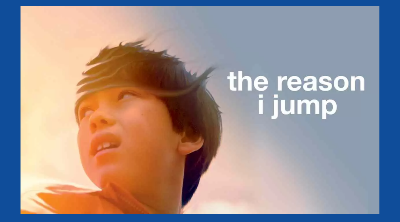
Movie Review: The Reason I Jump
“To live my life as a human being, nothing is more important than being able to express myself.”
How would it feel to live in a world where you can’t express yourself? In The Reason I Jump, a documentary-style movie based on a book by Naoki Higashida, you can see the lives of five remarkable young people, who are also non-verbal (or non-speaking) individuals with autism, on how they find their places in this noisy, lively, overwhelming world. This movie serves as an open window for a peek into the world of autism, taking everyone on a roller coaster ride on the ups and downs, denial and acceptance, struggles and joys, in this journey searching for acceptance of neurodivergent individuals.
Why is it interesting?
The movie shows some of the typical features or experience of individuals with autism:
- Being Non-verbal
Do you know that about one third of children with autism are non-verbals (Rose et al., 2016)? Non-verbals refer to individuals that are unable to speak, who would need to rely on other means of communication.
- Hypersensitivity challenges:
This experience is exquisitely captured through the amazing cinematography of the movie. Many individuals with autism are sensitive towards various stimuli, for example, loud sounds, tactiles or visual stimuli (Baum et al., 2015). Individuals with autism experience the world in a different way, and this may provide some explanation on their behaviours, for example self-stimulating behaviours. This sensitivity may also cause fear, as some experience stimuli of the surroundings more intensely than others.
- Self-Stimulatory (Stimming) Behaviours
“Why is the boy/girl flapping their hands?”
“Why is s/he making these odd sounds?”
These might be some common questions people have when encountering children or individuals with autism. Self-stimulating behaviours, or stimming behaviours, are behaviours that provide stimulation and comfort.
- Building friendships
Contrary to popular belief, friendships can be formed without any talks. The movie depicts a unique bond of friendship between two individuals with autism, that can be a common experience among non-verbals. Even though they are unable to communicate verbally, the bond they have formed between them is not in any way less than a typical friendship.
- Rejection, Discrimination & Stereotypes
Can you imagine being rejected and discriminated against just because you are being yourself? Unfortunately, the autism community is no stranger with the experiences of rejection, discrimination and stereotype. The movie (excellently) conveyed these experiences via stories of the characters who are deemed to be cursed or “possessed by demons” who have to fight for basic rights such as proper/adequate education, who prefer to connect with nature over people, because it never judges.
This is why we at EAP, do what we do.
To provide world-class services that support individuals with Autism and their families in leading fulfilling lives.
To make the world a more welcoming place, and to make life a little better for those on the spectrum
And this is why advocating and raising awareness and acceptance on autism are important.
It is not just about knowing more. It is about less hurtful comments, less bullying cases.
It is about access to fair opportunities, changing school policies, bringing a life-changing impact to the whole community.
Ultimately, it is about embracing diversity, it is about creating an inclusive world.
We are thankful for a movie like The Reason I Jump.
For showing us a different way of life.
For teaching us to be compassionate.
For telling us that the experience of life comes in many forms, and all is worth appreciation and respect.
If you have not had the chance to watch the movie, you can also check out the book, The Reason I Jump, currently (at time of writing) available at Kinokuniya Malaysia, Book Depository or Amazon.
References
Baum, S. H., Stevenson, R. A., & Wallace, M. T. (2015). Behavioral, perceptual, and neural alterations in sensory and multisensory function in autism spectrum disorder. Progress in neurobiology, 134, 140-160.
Rose, V., Trembath, D., Keen, D., & Paynter, J. (2016). The proportion of minimally verbal children with autism spectrum disorder in a community‐based early intervention programme. Journal of Intellectual Disability Research, 60(5), 464-477.